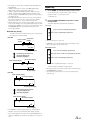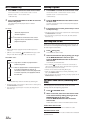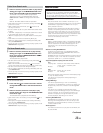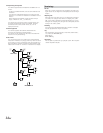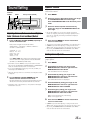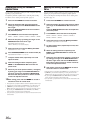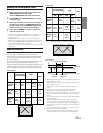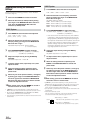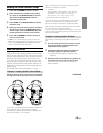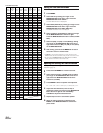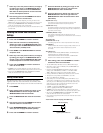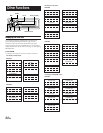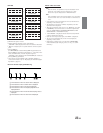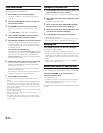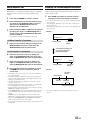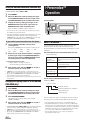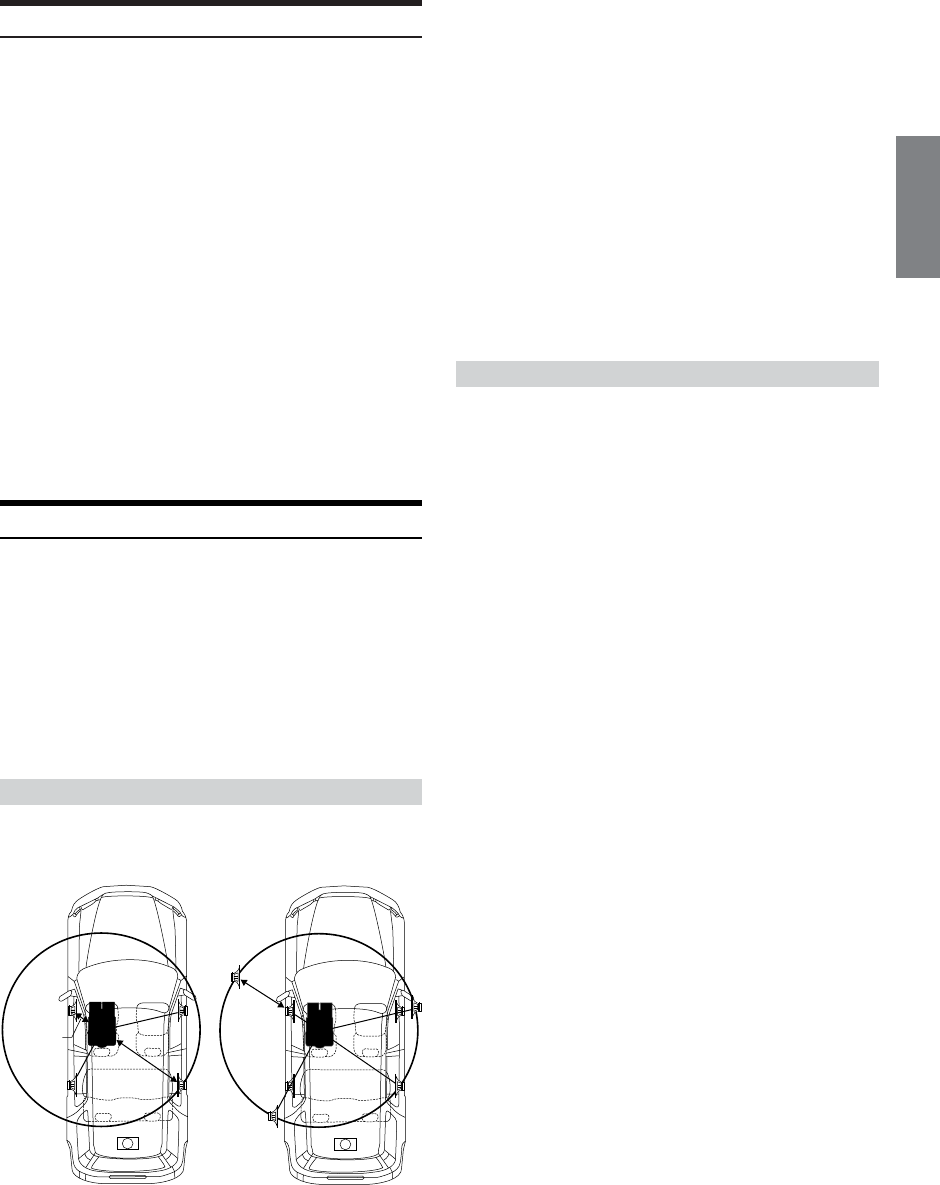
19-EN
Recalling the Stored Crossover Settings
1
Press and hold MENU for at least 2 seconds.
2
Select the Crossover (X-OVER) mode by sliding
your finger on the GlideTouch bar to the left or
right. Press the GlideTouch bar under the
Crossover (X-Over) mode.
3
Press FUNC. or the GlideTouch bar to activate
the preset mode.
4
Select any one of the preset numbers (1 through 6)
by sliding your finger on the GlideTouch bar to
the left or right. Press the GlideTouch bar under
the desired preset to recall the stored contents.
5
Press and hold MENU for at least 2 seconds to
return to normal mode.
•IfMENU is pressed while adjusting or setting the itmes in the
MENU mode, the unit will return to the previous selection secreen.
• By pressing the GlideTouch bar under RETURN in the MENU
mode, the unit will return to the normal mode.
About Time Correction
The distance between the listener and the speakers in a car vary
widely due to the complex speaker placement. This difference in the
distances from the speakers to the listener creates a shift in the sounds
image and frequency characteristics. This is caused by the time delay
between the sound reaching the listener’s right versus the left ear.
To correct this, the CDA-9855/CDA-9853 is able to delay the audio
signal to the speakers closest to the listener. This effectively creates a
perception of increased distance for those speakers. The listener can
be placed at an equal distance between the left and right speakers for
optimum staging.
The adjustment will be made for each speaker in 0.1 ms steps.
Example 1. Listening Position: Front Left Seat
Adjust the time correction level of the front left speaker
to a high value and the rear right to zero or a low value.
The sound is not balanced because the distance between the
listening position and the various speakers is different.
The difference in distance between the front left speaker and
the rear right speaker is 1.75 m (68-7/8").
2.25m
0.5m
5.1ms
Here we calculate the time correction value for the front left
speaker in the diagram on the above.
Conditions:
Farthest Speaker – listening position : 2.25 m (88-9/16")
Front left speaker – listening position : 0.5 m (19-11/16")
Calculation: L = 2.25 m – 0.5 m = 1.75 m (68-7/8")
Time correction = 1.75 ÷ 343*
1
× 1000 = 5.1 (ms)
*
1
Speed of sound: 343 m/s (765 mph) at 20˚C
In other words, giving the front left speaker a time correction
value of 5.1 ms makes it seem as if its distance from the
listener is the same as the distance to the farthest speaker.
Time correction eliminates the differences in the time required
for the sound to reach the listening position.
The time of the front left speaker is corrected by 5.1 ms so that
its sound reaches the listening position at the same time as the
sound of other speakers.
Example 2. Listening Position: All Seats
Adjust the time correction level of each speaker to almost the same
level.
1
Sit in the listening position (driver’s seat, etc.) and
measure the distance (in meters) between your
head and the various speakers.
2
Calculate the difference between the distance to
the farthest speaker and the other speakers.
L = (distance to farthest speaker) – (distance to other
speakers)
3
Divide the distances calculated for the speakers by
the speed of sound (343 m/s (765 mph) at 20˚C).
These values are the time correction values for the
different speakers.
Continued



